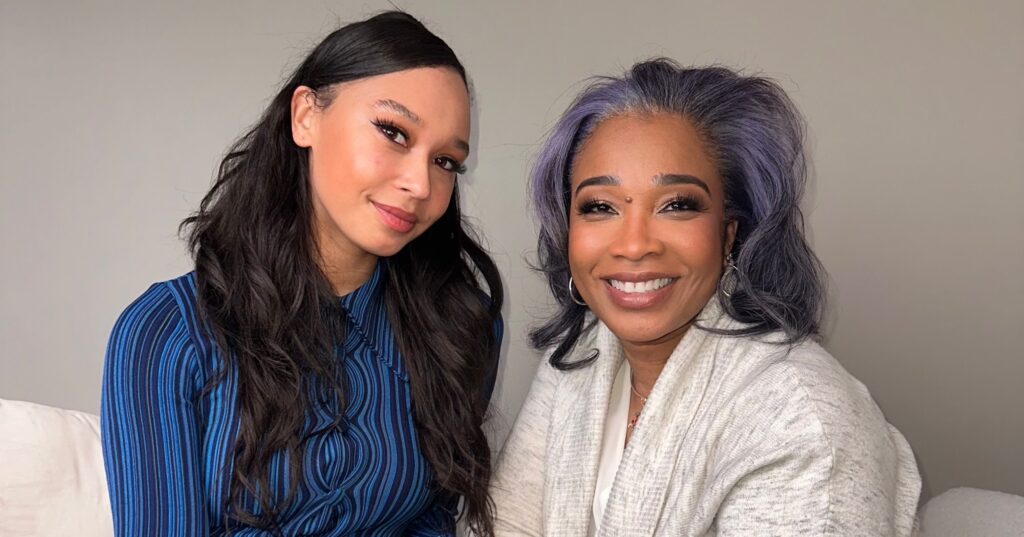Warning: This story contains graphic details of domestic violence.
I will never forget the night that finally made me leave. My ex-partner and I were at an event with friends. Everything seemed fine until he — as he often did — switched from affectionate to enraged without warning. Throughout the night, he sent me cryptic texts: “I’m watching you. You’ll see what happens when we get home.”
The venue was dark and crowded, which allowed him to hide in the shadows. When he finally appeared, I was already in tears. I told him I was done. He grabbed me so tightly I could barely breathe, whispering, “You’ll never leave me.” When I tried to escape, he threw me to the ground and began kicking me—my face, my stomach, my back. I remember praying, “God, please help me get through this.” A friend eventually pulled him off me, and another rushed me outside.
That night, I ran to my sister’s apartment. My best friend joined us, and together they convinced me to call my mother. I didn’t want to; I had been hiding so much from my family, and I knew calling meant going to the hospital and filing a report. I also feared what my ex had always threatened: “If you send me to jail, I’ll kill myself.”
When my mom saw my bruised face over FaceTime, she broke down. At the hospital, I was surrounded by police officers and doctors, forced to retell the story again and again. Even then, I tried to protect him—until I learned he and his mother lied to the police, saying I’d fallen down stairs. That betrayal broke something in me. I told the truth. I filed for a restraining order, terrified but determined to protect myself.
When I met him, I was in a vulnerable place and searching for love, something I think now that he sensed. The control and manipulation started subtly—name-calling, jealousy, isolation. I was shocked, yes, but I took it because I convinced myself that he loved me. Then the emotional abuse became physical. I was constantly walking on eggshells, terrified of his next outburst. He would punch walls, throw objects, and then apologize, promising he’d never hurt me again. Like so many survivors, I stayed, believing he could change. I was in a constant state of hope—hope that the man I first met would return, hope that things would go back to “normal.” However, the truth is that there was never anything normal about it.
Domestic violence is not simply isolated or personal; it’s cultural, systemic, and global. It crosses every boundary: race, class, gender, and age.
The abuse only escalated from there. Over time, I became someone I didn’t recognize—isolated, anxious, and ashamed. He would push me against walls, crack drywall, and then threaten to harm himself to pull me back in. I remember breaking down locked doors to stop him from self-harming. Every time I thought of leaving, he’d promise to change—or promise to die.
After that final night, something inside me broke open. I started therapy and eventually found Safe Horizon through friends and family who told me about the work they do. It was the first time I felt truly ready to speak out.
I learned that my story was not unique, and that’s what makes it so devastating. Domestic violence is not simply isolated or personal; it’s cultural, systemic, and global. It crosses every boundary: race, class, gender, and age. The tactics abusers use are eerily similar: isolation, intimidation, emotional manipulation, and control.
Safe Horizon, the largest victim service nonprofit in the U.S., provides critical resources for survivors of abuse and violent crime. What drew me to them was their inclusive approach—they support survivors of domestic violence, sexual assault, sex trafficking, and more. Their Streetwork Project helps young people experiencing homelessness due to abuse, offering food, shelter, medical care, and compassion without judgment. They reach survivors wherever they are, meeting them with dignity and safety.
Too often, young women—especially Black women—don’t feel safe seeking help. We’re told to stay quiet, that no one will believe us, that leaving is pointless. And the question survivors hear most—“Why didn’t you just leave?”—is one of the most harmful. As FKA Twigs bravely shared when speaking about her own experience, that question blames the survivor instead of the perpetrator. Leaving isn’t simple—it’s dangerous. It’s layered with fear, shame, financial dependency, and psychological manipulation. Even after leaving, survivors face systemic challenges: renewing restraining orders, reliving trauma in court, and constantly looking over our shoulders.
Through Safe Horizon, I found healing, advocacy, and community. The organization’s leaders like Lisa A. O’Connor and Liz Roberts, create true safety by approaching survivors with empathy, patience, and emotional intelligence. Even small gestures—asking “Do you welcome hugs?”—remind survivors that we have autonomy again.
One of the most profound parts of my healing has been realizing that survival doesn’t mean the pain disappears. It means transforming it. As author and grief expert David Kessler wrote, I learned to turn my “pain into purpose”. I use my voice now to help others recognize the signs of abuse before it’s too late. Love should never make you smaller. Real love doesn’t silence, it protects and uplifts.

If you or someone you know is experiencing abuse, reach out to Safe Horizon at 1-800-621-HOPE (4673) or visit safehorizon.org. There is a way out, and there are people here to help you find it.
Safe Horizon resources:
Safety Plan
SafeHorizon.org
Safe Horizon 24-Hour HOPE hotline
Safe Horizon on Instagram
Safe Horizon Immediate Help Options
Like what you see? How about some more R29 goodness, right here?
Domestic Violence Is A Tool Of Voter Suppression
What Top Boy Gets Right About Domestic Violence
We Need To Change How We Talk About Domestic Abuse


